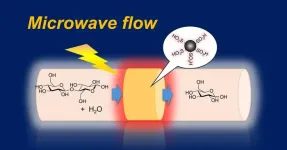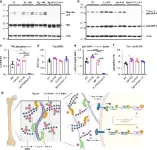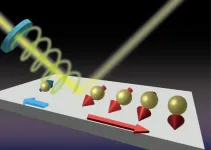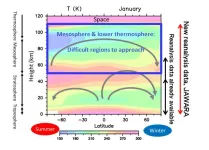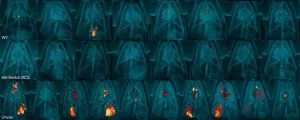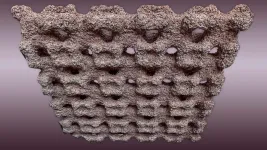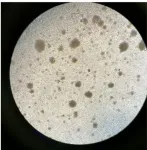(Press-News.org)
Fukuoka, Japan—Researchers at Kyushu University have developed a device that combines a catalyst and microwave flow reaction to efficiently convert complex polysaccharides into simple monosaccharides. The device utilizes a continuous-flow hydrolysis process, where cellobiose—a disaccharide made from two glucose molecules—is passed through a sulfonated carbon catalyst that is heated using microwaves. The subsequent chemical reaction breaks down cellobiose into glucose. Their results were published in the journal ACS Sustainable Chemistry & Engineering.
Converting biomass into useful resources has been a topic of scientific research for decades. Biomass polysaccharides, long-chain complex sugars which are ubiquitous in nature, are considered to be one of the more promising substances for efficient conversion since they can be converted into simple sugars that, in turn, can be used in food, pharmaceuticals, and chemical synthesis.
Hydrolysis is one of the more efficient chemical reactions that convert long chain sugars into simple sugars, usually using acids as catalysts. While many acid catalysts are in gas or liquid form, solid acid catalysts—which, as the word describes, is an acid in solid form—are known to be more recyclable and thus have been a point of focus for researchers.
However, solid acid catalysts require high temperatures for them to react efficiently. To overcome this, Associate Professor Shuntaro Tsubaki from Kyushu University’s Faculty of Agriculture and his team investigated applying microwave flow reactions to heat the solid catalysts during the reaction process.
“Microwaves form a localized high-temperature reaction field on the solid catalyst, which can lead to higher catalytic activity while keeping the overall reaction system at a lower temperature,” explains Tsubaki. “In addition, we can have the substrate flow continuously through the reaction vessel where microwaves are applied to the catalyst, resulting in higher yields of the desired product.”
The device the researchers developed utilized a solid acid catalyst composed of sulfonated carbon. Cellobiose, a disaccharide, was used as a model sugar substrate to test the system. In their device, a solution of cellobiose would be passed through the sulfonated carbon catalyst that was heated to up to 100-140℃ using microwaves. The catalyst would then break apart the cellobiose through hydrolysis and produce the monosaccharide glucose.
One of the keys for the system’s efficiency is thanks to the ability to separate the microwave’s electric and magnetic fields.
“Microwaves produce both electric and magnetic fields. The electric field causes the heating of dipolar materials like water. This is what heats up your food. The magnetic field, on the other hand, induces heating of conductive materials like metals and carbon,” says Tsubaki. “In our device we were able to increase catalytic activity by separating the two fields, then using the electric field to heat the liquid solution of cellobiose and at the same time use the magnetic field to heat up the catalyst.”
Microwave-accelerated catalytic reactions have been applied for a variety of chemical reactions, including organic synthesis, plastics recycling, and biomass conversion. The team hopes that as renewable energy sources continue to surge, electricity-driven chemical production such as theirs will help move the industry toward a greener future.
“We expect our system will help in the development of more sustainable chemical synthesis. We would also like to explore the utility of our methodology on the hydrolysis of other polysaccharides as well as in proteins for the production of amino acids and peptides,” concludes Tsubaki.
###
For more information about this research, see "Efficient Cellobiose Hydrolysis over Sulfonated Carbon Catalyst in a Spatially Separated Microwave Electric- and Magnetic-Field Flow Reactor," Shuntaro Tsubaki, Kazuaki Senda, Ayumu Onda, Satoshi Fujii, ACS Sustainable Chemistry & Engineering, https://doi.org/10.1021/acssuschemeng.4c07690
About Kyushu University
Founded in 1911, Kyushu University is one of Japan's leading research-oriented institutes of higher education, consistently ranking as one of the top ten Japanese universities in the Times Higher Education World University Rankings and the QS World Rankings. The university is one of the seven national universities in Japan, located in Fukuoka, on the island of Kyushu—the most southwestern of Japan’s four main islands with a population and land size slightly larger than Belgium. Kyushu U’s multiple campuses—home to around 19,000 students and 8000 faculty and staff—are located around Fukuoka City, a coastal metropolis that is frequently ranked among the world's most livable cities and historically known as Japan's gateway to Asia. Through its VISION 2030, Kyushu U will “drive social change with integrative knowledge.” By fusing the spectrum of knowledge, from the humanities and arts to engineering and medical sciences, Kyushu U will strengthen its research in the key areas of decarbonization, medicine and health, and environment and food, to tackle society’s most pressing issues.
END
A recent study has uncovered the essential roles of two proteoglycans, biglycan and decorin, in maintaining bone mass, water retention, and bulk/in situ mechanical competence. Through the use of genetically modified mouse models, the research demonstrates that while biglycan plays a predominant role in preserving bone structure and toughness, decorin significantly contributes to the bone’s mechanical properties. These findings reveal how these proteins interact with water and other matrix components to regulate the mechanical ...
Researchers Ibuki Taniuchi, Ryota Akiyama, Rei Hobara, and Shuji Hasegawa of the University of Tokyo have demonstrated that the direction of the spin-polarized current can be restricted to only one direction in a single-atom layer of a thallium-lead alloys when irradiated at room temperature. The discovery defies conventions: single-atom layers have been thought to be almost completely transparent, in other words, negligibly absorbing or interacting with light. The one-directional flow of the current observed in this study makes possible functionality beyond ...
A team led by researchers at the University of Tokyo have created a dataset of the whole atmosphere, enabling new research to be conducted on previously difficult-to-study regions. Using a new data-assimilation system called JAGUAR-DAS, which combines numerical modeling with observational data, the team created a nearly 20-yearlong set of data spanning multiple levels of the atmosphere from ground level up to the lower edges of space. Being able to study the interactions of these layers vertically and around the globe could improve climate modeling and seasonal weather forecasting. There is also potential for interdisciplinary research between atmospheric scientists ...
PITTSBURGH, Jan. 10, 2025 – A self-destructing vaccine administered intravenously provides additional safety and protection against tuberculosis (TB) in macaque monkeys, suggests new University of Pittsburgh research published today in Nature Microbiology.
The in-built safety mechanisms circumvent the possibility of an accidental self-infection with weakened mycobacteria, offering a safe and effective way to combat the disease that was named as the deadliest of 2024 by the World Health Organization.
“Although the idea of intravenous vaccination with a live vaccine may sound scary, it was very ...
The group of bacteria called Enterobacteriaceae, including Klebsiella pneumoniae, Shigella, E.coli and others, is present at low levels as part of a healthy human gut microbiome. But at high levels - caused for example by increased inflammation in the body, or by eating contaminated food - these bugs can cause illness and disease. In extreme cases, too much Enterobacteriaceae in the gut can be life-threatening.
Researchers have used computational approaches including AI to analyse the gut microbiome composition of over 12,000 people across 45 countries from their stool samples. They found that a person’s microbiome ‘signature’ can predict ...
Whether it’s the meeting room of an office building, the exhibition room of a museum or the waiting area of a government office, many people gather in such places, and quickly the air becomes thick. This is partly due to the increased humidity. Ventilation systems are commonly used in office and administrative buildings to dehumidify rooms and ensure a comfortable atmosphere. Mechanical dehumidification works reliably, but it costs energy and – depending on the electricity used – has a negative climate impact.
Against this backdrop, a team of researchers from ETH Zurich investigated a new approach to passive dehumidification of indoor spaces. Passive, in this context, means ...
More than half of 23-year-olds in a European study show restrictive, emotional or uncontrolled eating behaviours, according to new research led by the Institute of Psychiatry, Psychology & Neuroscience (IoPPN) at King’s College London. Structural brain differences appear to play a role in the development of these eating habits.
The study, published in Nature Mental Health, investigates the links between genetics, brain structure and disordered eating behaviours in young people. Researchers found that the process of ‘brain maturation’, ...
A research team led by Prof. QIN Guozheng from the Institute of Botany of the Chinese Academy of Sciences has unveiled a previously unrecognized mechanism by which the RNA N6–methyladenosine (m6A) demethylase SlALKBH2 undergoes reduction-oxidation (redox) modification. This alteration affects its stability and its physiological role in regulating the normal ripening of tomato fruits.
In this study, published in Nature Plants, the researchers deepened their understanding of the role of hydrogen peroxide ...
T cells can independently prevent acute viral infections to an extent previously thought only possible with neutralising antibodies.
Findings challenge the longstanding reliance on neutralising antibodies for assessing viral immunity, and suggest that development of future vaccines must consider both antibody and T-cell responses for comprehensive protection.
Singapore, 10 January 2025—Scientists from Duke-NUS Medical School and the Singapore General Hospital have discovered that T cells—white blood cells that can destroy harmful pathogens—can completely prevent viral infection, to an extent ...
A new study based on the sampling and analysis of volcanic ash at Cumbre Vieja volcano in the Canary Islands, located off Africa’s northwest coast, suggests that the composition of magma could drive tremors during volcanic eruptions. The findings, which are detailed today in the journal Nature Geoscience in a paper led by scientists at the American Museum of Natural History and the City University of New York (CUNY), highlight the potential of volcanic ash analysis as a monitoring and forecasting tool.
“The volcano research community has gotten ...
